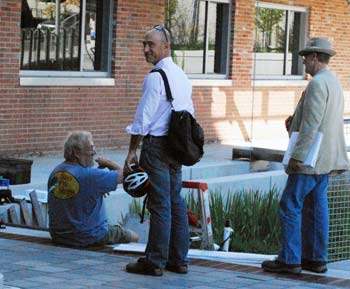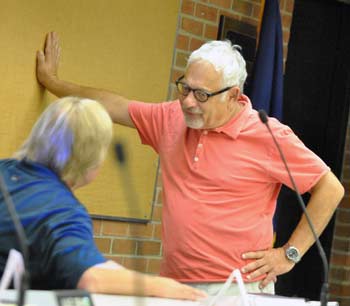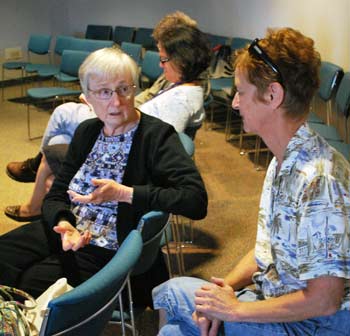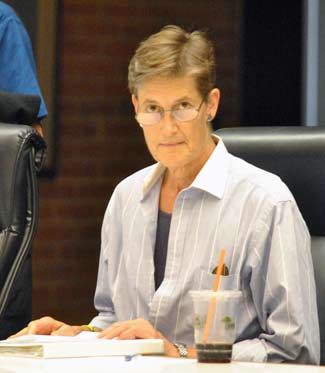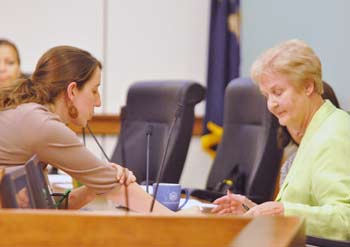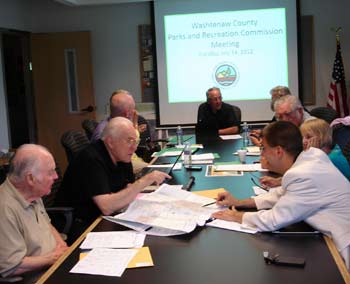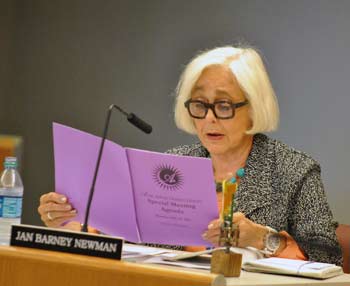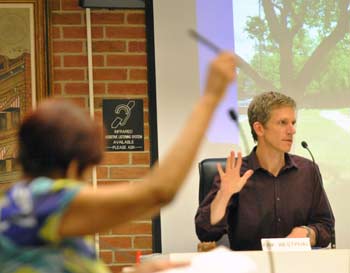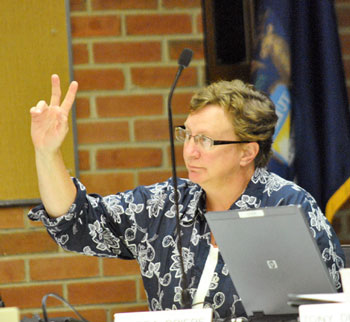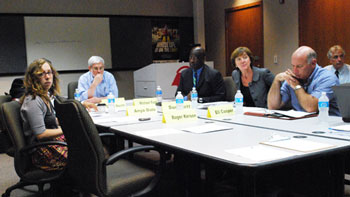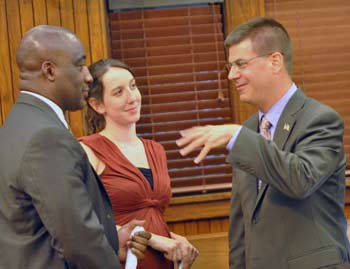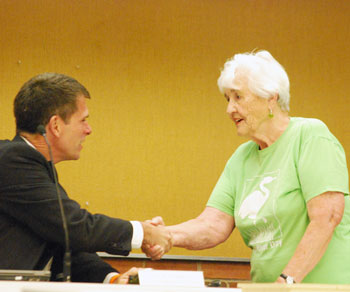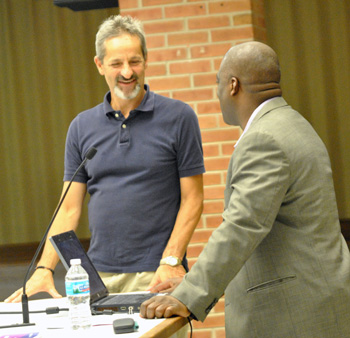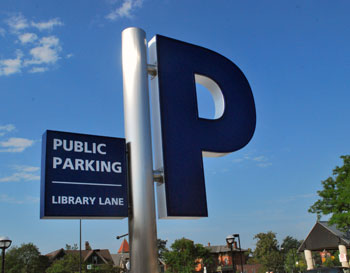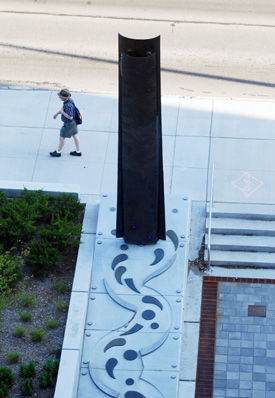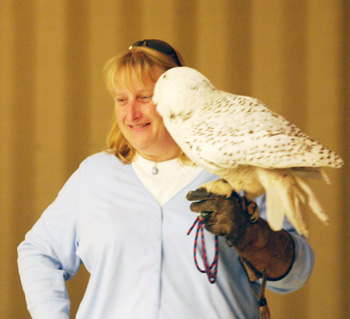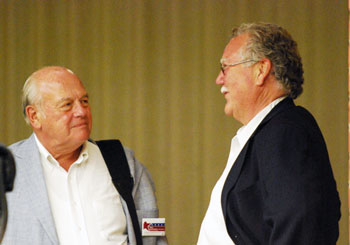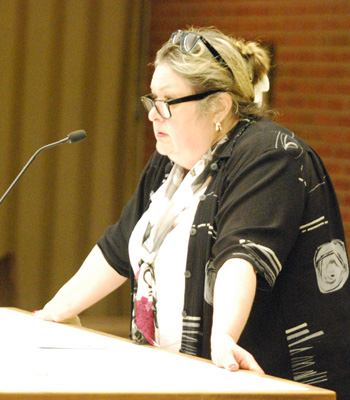Ann Arbor DDA Board Addresses Housing
Ann Arbor Downtown Development Authority board meeting (Sept. 5, 2012): The only agenda item requiring a vote by the board was a resolution encouraging the Ann Arbor city council to adopt a policy that would direct proceeds from the sale of city-owned land to support affordable housing. The mechanism for that support would be the city’s affordable housing trust fund.

Left to right: DDA board member Sandi Smith, Ann Arbor Housing Commission executive director Jennifer L. Hall, and DDA board chair Leah Gunn. (Photos by the writer.)
And board members voted unanimously to support the resolution, which DDA board member Sandi Smith had brought forward. Smith, who also represents Ward 1 on the Ann Arbor city council, is planning to bring the policy resolution to the council for consideration at its Sept. 17 meeting.
DDA board members were positively inclined toward their own resolution, but sought to clarify that the “proceeds” meant net proceeds – that is, whatever is left after any debt associated with city-owned land is paid off. The loan for the city’s acquisition of the former YMCA lot, for example, still has a principal of $3.5 million associated with it. Smith indicated at the meeting that the resolution she brings to the council might involve the DDA forgoing the repayment on investments it has made in city-owned property – like interest payments on the former YMCA lot or the demolition costs associated with that property.
The board also made an amendment to the resolution during the meeting, adding the phrase “a percentage of [proceeds].” The change gives the council flexibility to adopt a policy that doesn’t require the entire amount of the net proceeds to be directed to the affordable housing trust fund.
At the Sept. 5 meeting, the board also heard a request from the executive director of the Ann Arbor Housing Commission, Jennifer L. Hall, for a $260,000 allocation from the DDA’s own housing fund. The DDA has a housing fund that’s not necessarily dedicated to affordable housing. But the request Hall was making was for Baker Commons, a public housing project located within the DDA’s geographic district, at Packard and Main. The money would primarily go toward replacing the roof with one made of metal.
The board also got its regular update on the parking system. The basic message: revenue is up, and usage is up. The board also had a look at the unaudited financial figures for the end of fiscal year 2012, which concluded on June 30. Except for capital expenses, which were less than budgeted, most categories were on target. The DDA had budgeted all expenses for the new Library Lane parking structure for that fiscal year, but not all invoices have come in yet.
The board was also updated on a possible change to the way that transportation planning and funding takes place in Washtenaw County. Discussions by the policy board of the Washtenaw Area Transportation Study (WATS) suggest the possibility that Washtenaw County could form its own metropolitan planning organization (MPO). Currently, the Southeast Michigan Council of Governments (SEMCOG), which includes a total of seven counties, serves as the MPO for Washtenaw County. The change would affect how federal transportation funding is administered locally. [Full Story]






